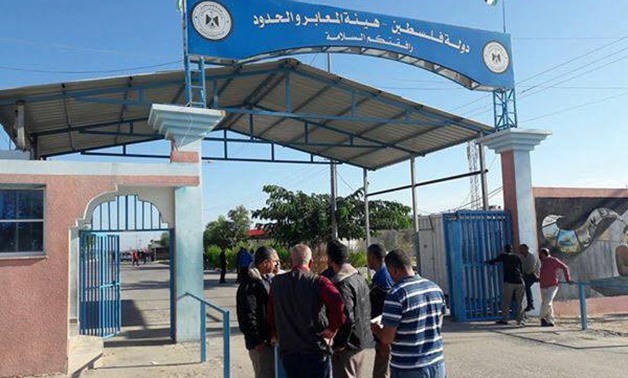
Erez crossing N. Gaza - Press photo
CAIRO – 2 November 2017: Seven crossing borders in Gaza have been handed over to the Palestinian National Reconciliation Government after a long period of conflict between Fatah and Hamas that severely affected their capability to negotiate their cause internationally.
However, after the reconciliation conducted between Fatah and Hamas under Egypt's sponsorship last month, several things have changed as the Palestinian factions announced their unity.
On November 1, the Gaza authorities that used to control the crossings handed over their responsibilities to the National Reconciliation Government which is going to bring about many changes even within Palestinians' daily lives.
Here is all you need to know about the Gaza crossings that have been handed to the government:
The Rafah crossing border: one of the most important crossings between Egypt and Gaza which was under Gaza authorities’ control.
This crossing is mainly specialized for individual movements across borders, and it was being prepared for goods transfer between the two courtiers.
The Rafah crossing border's importance increased after the Israeli forces had destroyed the Yasser Arafat International Airport in 2001; which was the only airport allowing Palestinians to air-travel.
In 2005, an international agreement between Palestine, Egypt, the European Union and the United States was signed to regulate the crossing operation and movement.
The Erez (Bait Hanon) Crossing: is under Israeli auspices as the only direct crossing border that allows individuals to cross directly into the West Bank without going through Egypt or Jordon.
The crossing, located north of the Gaza Strip, is almost completely closed since the Gaza authorities have controlled it instead of the national government; no one crosses this border without being granted permission by Israel and submitting to security checks.
The Karni Crossing: located in the north-eastern end of Gaza, and described to be the largest crossing in the Strip.
It is usually used for transferring merchandise between Palestine and other countries as it accommodates approximately 220 trucks per day. However, since the Gaza authorities controlled it, the Karni Crossing has been witnessing a semi-complete closing.
The Sofa crossing: Located in east Rafah and known to be one of the smallest crossings in the strip; it is controlled completely by Israeli authorities and has been closed for a long period.
The Nahal Oz crossing: also known as Al-Shaga'ia crossing, it is one of the most important crossings for fuel transportation; usually closed by Israeli authorities since the Gaza authorities assumed control over it.
The Kerem Shalom crossing: operates occasionally as an alternative to the Rafah crossing since it is located near the Egyptian-Palestinian-Israeli borders. It is used mainly for trade movements between the Gaza Strip and Israel.
The Al-Karara (Kissufim) crossing: is located east of Khan Yunis and Deir al-Balah and is designated mainly for Israeli military action. It is usually used by tanks and military vehicles whenever Israeli authorities announce plans to invade the Gaza Strip.
According to the Fatah and Hamas reconciliation agreement signed in Cairo on October 12, all borders in the Gaza Strip will be handed to the National Reconciliation Government.
On September 17, Hamas movement announced the dissolution of the administrative committee at the Gaza Strip, inviting the Government of National Reconciliation to assume its duties and hold general elections. The movement affirmed it would comply with the Social Reconciliation Accord signed in 2011.
Earlier, Palestinian President Mahmoud Abbas said that there is no country as vital to the Palestinian cause as Egypt due to its historical and political position in the region. “Egypt has an opinion, a position and an interest in the Palestinian cause,” said Abbas.
Comments
Leave a Comment